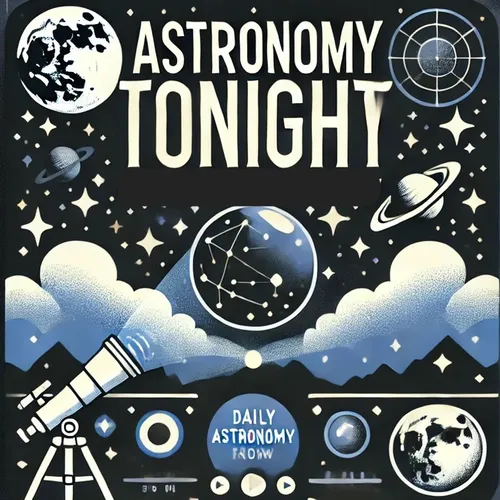Astronomy Tonight for - 11-29-2024
- Author
- Inception Point Ai
- Published
- Fri 29 Nov 2024
- Episode Link
- https://www.spreaker.com/episode/astronomy-tonight-for-11-29-2024--63058492
Certainly! On November 29th in the world of astronomy, we have a fascinating event to discuss:
On November 29, 1803, an extraordinary celestial spectacle occurred that would change our understanding of the solar system forever. On this date, the asteroid 4 Vesta was discovered by German astronomer Heinrich Wilhelm Olbers.
Picture this: It's a chilly autumn night in Bremen, Germany. Olbers, a physician by day and passionate astronomer by night, is peering through his telescope, methodically scanning the night sky. Suddenly, he notices a faint point of light that doesn't quite fit with the surrounding stars. Excited by this anomaly, he carefully records its position and movement.
Little did Olbers know that he had just spotted the fourth asteroid ever discovered, and what would later be recognized as the second-largest object in the asteroid belt after the dwarf planet Ceres.
Vesta, named after the Roman goddess of home and hearth, is a fascinating celestial body. It's so large that it's sometimes referred to as a protoplanet, meaning it almost became a full-fledged planet but didn't quite make the cut. With a diameter of about 525 kilometers, it's large enough to be visible to the naked eye under perfect conditions - making it the brightest asteroid visible from Earth.
What makes Vesta particularly intriguing is its composition. Unlike most asteroids, which are primarily rocky or metallic, Vesta has a differentiated interior with a metallic core, rocky mantle, and basaltic crust - much like terrestrial planets. This unique structure has led scientists to dub Vesta the "smallest terrestrial planet."
In a twist of cosmic irony, Olbers' discovery of Vesta came just two years after he had discovered another asteroid, Pallas. This led to him formulating the now-defunct "Olbers' hypothesis," which suggested that these asteroids were remnants of a destroyed planet that once orbited between Mars and Jupiter.
While we now know this isn't the case, Olbers' discovery of Vesta on that November night over 200 years ago opened up new avenues of research and speculation about the formation and evolution of our solar system. It's a reminder that even on chilly autumn nights, the universe can reveal its wonders to those patient enough to look.
This content was created in partnership and with the help of Artificial Intelligence AI
